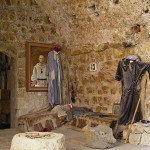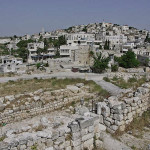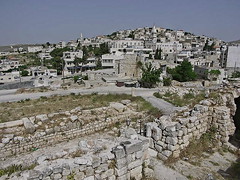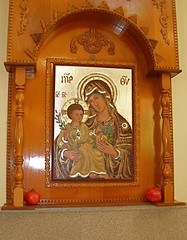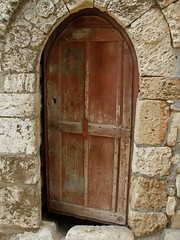 |
| Mosaic of the choir of the Latin Church, Jesus and his disciples are welcomed to the inhabitants of Taybey-Ephraim |
John 11:54 Therefore Jesus no longer moved ... - Bible Hub
biblehub.com/john/11-54.htmpublic ministry among the people and left Jerusalem. ... Jesus therefore no longer walked openly among the Jews, but went from there to ... Instead, he went from there to a town called Ephraim in the region near the ... near the desert, to a city called Ephraim, where he stayed with his disciples.
Priest’s retreat is remembered
Another celebrated visitor to Taybeh was Charles de Foucauld, a French-born priest, explorer, linguist and hermit who was beatified by the Catholic Church in 2005.
De Foucauld passed through Taybeh as a pilgrim in 1889 and returned in 1898 for an eight-day retreat that is recorded in 45 pages of his spiritual writings.
After his death (he was shot dead by raiding tribesmen in Algeria in 1916, aged 58), his example inspired the founding of several religious congregations.
In 1986 a pilgrims’ hostel called the Charles de Foucauld Pilgrim Centre was opened in Taybeh.
Taybeh
West Bank
The Palestinian village of Taybeh, the only Christian town left in Israel or the Palestinian Territories, holds fast to its memory of Jesus seeking refuge there shortly before his crucifixion.
The Gospel of John says Jesus went to Taybeh — then called Ephraim — after he raised Lazarus to life and the Jewish authorities planned to put Jesus to death.
“Jesus therefore no longer walked about openly among the Jews, but went from there to a town called Ephraim in the region near the wilderness; and he remained there with the disciples.” (John 11:54)
 |
| Ephraim-wilderness-to-east |
Taybeh (pronounced Tie-bay) is 30 kilometres northeast of Jerusalem and 12 kilometres northeast of Ramallah. From its elevated site between biblical Samaria and Judea, it overlooks the desert wilderness, theJordan Valley, Jericho and the Dead Sea.
Living amidst Muslim villages, Israeli settlements and military roadblocks, Taybeh’s inhabitants (numbering 1300 in 2010) are intensely proud of their Christian heritage.
The village’s Greek Orthodox, Roman Catholic (Latin) and Greek Catholic (Melkite) communities maintain an ecumenical spirit — even celebrating Christmas together on December 25 according to the Western calendar and Easter according to the Eastern calendar.

